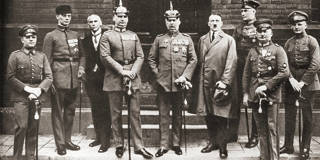A century after Adolf Hitler was prosecuted for his role in the Beer Hall Putsch, it is worth remembering how the Nazi leader used the courtroom as a stage, portraying himself as the victim of an overzealous judiciary. As former US President Donald Trump faces a slew of trials, his opponents should take the comparison seriously.
DUBLIN – On April 1, 1924, Adolf Hitler should have been terrified. Four and a half months earlier, the Nazi leader had led a failed coup d’état in Munich, the Bavarian capital. Inspired by the Italian Fascist Benito Mussolini, Hitler had planned to march his supporters on to Berlin, where they would destroy the democratic Weimar Republic.
The insurrection began just after 8 p.m. on November 8, 1923, when Hitler and his followers burst into a political rally and held the crowd hostage. During the drunken rampage that followed, Hitler’s Sturmabteilung (Storm Troopers) vandalized their opponents’ political offices and assaulted the city’s Jews as they tried, but failed, to occupy central Munich.
The Nazi attempt to seize power ended the following morning, with a column of 2,000 armed putschists, led by Hitler, confronting the police and the German army in the Odeonsplatz (a large public square). After a brief firefight, four Bavarian policemen lay dead. Hitler, who was dragged to the ground when the gunfire started, fled the scene in agony, having dislocated his shoulder. The man standing beside him was fatally shot.

DUBLIN – On April 1, 1924, Adolf Hitler should have been terrified. Four and a half months earlier, the Nazi leader had led a failed coup d’état in Munich, the Bavarian capital. Inspired by the Italian Fascist Benito Mussolini, Hitler had planned to march his supporters on to Berlin, where they would destroy the democratic Weimar Republic.
The insurrection began just after 8 p.m. on November 8, 1923, when Hitler and his followers burst into a political rally and held the crowd hostage. During the drunken rampage that followed, Hitler’s Sturmabteilung (Storm Troopers) vandalized their opponents’ political offices and assaulted the city’s Jews as they tried, but failed, to occupy central Munich.
The Nazi attempt to seize power ended the following morning, with a column of 2,000 armed putschists, led by Hitler, confronting the police and the German army in the Odeonsplatz (a large public square). After a brief firefight, four Bavarian policemen lay dead. Hitler, who was dragged to the ground when the gunfire started, fled the scene in agony, having dislocated his shoulder. The man standing beside him was fatally shot.